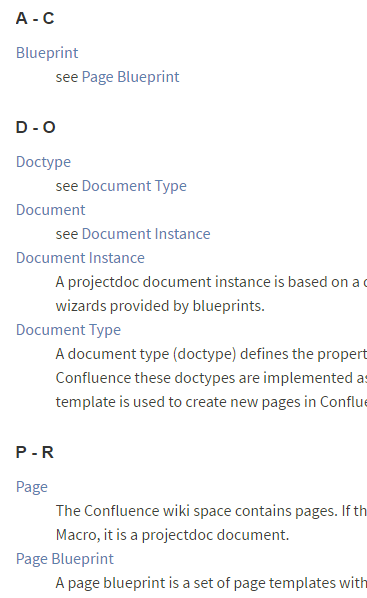
To enforce a common understanding of the domain, a glossary should define the terms important for the project. This also supports the ubiquitous language and makes sure nobody is left behind.
Teams and also single authors need to use terms in the documentation correctly.
Writing demands to use the same wording for the same concepts. It is also necessary to define the terms of the domain so that they are commonly understood. How can this be achieved?
Structure
Glossaries contain the definition or description of a term. This not only includes the spelling, but also the semantics. An entry of a glossary also allows to add metadata and references to related terms and other information about the term.
A glossary does not need to be created in advance. It can be created on-the-fly. Whenever authors use a term that is part of the domain, the term is added to the glossary. If the term already exists the authors can make sure that it is used correctly and probably add additional information to the term's page in the glossary. If there are any problems encountered, the term should be discussed within the team.
A glossary may also help to create an ubiquitous language as demanded by the Domain Driven Design approach.
Advantages
- A glossary ensures a common understanding of the terms.
- A domain may be analyzed by the team based on the teams.
- A glossary makes the domain knowledge explicit.
- A glossary may be used by style guides to ensure a common wording.
- A glossary supports
- Single Sourcing: Each term is defined on a single page
- Single Point of Access: additional information about the term is found on this page
Disadvantages
- Creating a glossary requires resources.
- Defining or even only describing a term is not easy.
The following practices are related to this practice.
Resources
For more information regarding this practice please refer to: